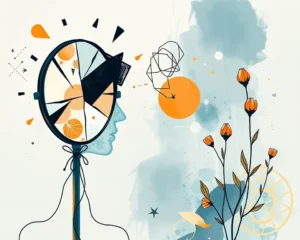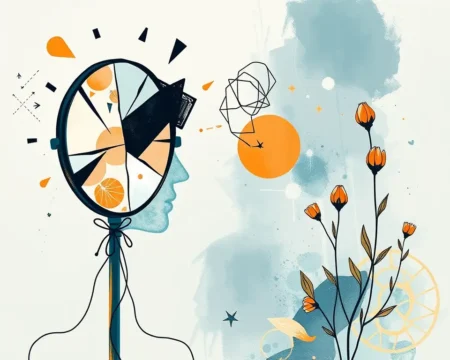In today’s fast-paced world, the pursuit of self-improvement often feels like an unending race. We’re bombarded with messages urging us to be more productive, healthier, and successful. While the desire for personal growth is admirable, the relentless pursuit can lead to burnout, a state of emotional, physical, and mental exhaustion. Looking back at historical perspectives, we can find valuable lessons on how to approach self-improvement in a sustainable way, avoiding the pitfalls of overexertion.
A Historical Look at Work-Life Balance
The concept of work-life balance, a cornerstone of sustainable self-improvement, is not new. While the term itself gained prominence in the late 20th century, concerns about overwork and its impact have existed for centuries.
Early Industrial Era
The Industrial Revolution brought about significant changes in working conditions. In the late 1800s, workers in the UK often toiled for 14-16 hours a day, six days a week. Such long hours led to health and social problems, especially for children who were also part of the workforce. This era spurred labor reformers to advocate for shorter working hours, particularly for women and children. In the US, it was discovered that workers were averaging more than 100 hours a week. These findings highlighted the urgent need for a more humane approach to work.
The 20th Century and Beyond
The early 20th century saw some progress with the establishment of a 44-hour work week in the US by 1938, although it was often assumed that professionals were always “on call.” The concept of work-life balance gained further traction in the 1970s and 1980s, largely due to the Women’s Liberation Movement, which advocated for flexible schedules and maternity leave. Initially, it focused on women, who were expected to manage careers and family responsibilities, but soon expanded to include all professionals. The rise of technology, especially smartphones, introduced new challenges by blurring the lines between work and personal life, often leading to an “always-on” culture.
Ancient Philosophies and Self-Improvement
Ancient civilizations understood the importance of balance and well-being, offering insights that remain relevant today.
Ancient Greece
Ancient Greek philosophers, such as Socrates, emphasized self-knowledge as the foundation of self-improvement. Socrates believed that understanding one’s strengths, weaknesses, values and beliefs was crucial for a fulfilling life. The maxim “Know Thyself,” inscribed at the Temple of Apollo at Delphi, is a testament to the importance of introspection. Additionally, Aristotle championed the idea of Katharsis, or emotional release, through art and creative expression as a means to achieve clarity and renewal. The Greeks also valued Sophrosyne, or moderation, in all aspects of life, promoting balance and harmony.
Stoicism
Stoic philosophers like Epictetus, Seneca, and Marcus Aurelius offered timeless wisdom on how to navigate life’s challenges. They advocated for focusing on what one can control (one’s thoughts and actions) and accepting what one cannot. Introspection and self-reflection were key practices for understanding one’s own values and cultivating inner peace. Stoicism views challenges as opportunities for growth, emphasizing resilience and intentional living.
Ancient India
In ancient India, the practice of yoga extended far beyond physical postures, embracing a holistic journey of self-realization. The Yoga Sutras of Patanjali outlined an eightfold path to guide practitioners from ethical precepts through physical discipline and breath control to meditation and enlightenment. This approach emphasizes aligning the body’s energy channels to prepare for deeper states of meditation, combining the physical, mental, and spiritual aspects of well-being.
The Modern Understanding of Burnout
The term “burnout” was first used in the 1970s, but the phenomenon itself is not new.
Defining Burnout
The term “burnout” was first used informally, then later clinically, by psychologist Herbert Freudenberger in 1974 to describe the emotional and physical depletion he observed in volunteers working at a free clinic. Initially, it was associated with professionals in caregiving roles, such as healthcare workers. However, the concept has since expanded to include a wide range of professions and life situations.
Historical Context
Even before the term “burnout” was coined, similar experiences were observed in various fields. For example, US air traffic controllers in 1971 described feelings of exhaustion affecting the quality of their work. This highlights that burnout is not a new phenomenon but rather an experience that has existed across various high-pressure professions throughout history. Early research into work and life balance in the 1930s recognized the socioeconomic factors that influence stress levels. The 1960s saw more focused research into the impact of work on personal life, particularly for working mothers and dual-earner families.
Contributing Factors
Modern burnout is often linked to excessive workloads, long hours, high job demands, low control, lack of support, and poor work-life balance. Personal factors, such as perfectionism, limited coping skills, and lack of social support, also play a significant role. It is important to recognize burnout as a serious condition that affects not only work performance but also overall well-being.
Sustainable Self-Improvement Strategies
Drawing from historical insights and modern understanding, here are some strategies for sustainable self-improvement that can help prevent burnout:
1. Prioritize Self-Care
Self-care is not about indulgence but about maintaining your physical, mental, and emotional well-being. This includes:
- Physical Health: Maintain a balanced diet, exercise regularly, and get enough sleep. Pay attention to what you eat, focusing on plant-based options and whole foods.
- Mental Health: Practice mindfulness, meditation, and other relaxation techniques. Engage in creative activities like journaling, art, or music.
- Emotional Health: Set boundaries, connect with supportive people, and practice self-compassion. Seek help when needed.
2. Establish Clear Boundaries
Set limits between work and personal life to prevent work from encroaching on your free time. Avoid checking emails or taking calls outside of work hours, and make time for relaxation and hobbies.
3. Embrace Mindful Technology Usage
Be conscious of how technology affects your well-being. Take digital detoxes and practice screen time management. Use technology as a tool, not as a source of stress.
4. Focus on Consistent Growth, Not Intensity
Sustainable personal development is a gradual process, not a quick fix. Set realistic goals, create flexible routines, and focus on consistency over intensity. Break down larger goals into smaller, achievable steps to avoid feeling overwhelmed.
5. Cultivate Self-Awareness
Take time for introspection and self-reflection. Understand your values, motivations, and strengths, as well as your weaknesses. This self-knowledge will help you make more informed decisions and stay true to yourself.
6. Seek Feedback
Actively seek feedback from trusted peers or mentors to gain an external perspective on your progress. This can highlight areas for improvement and provide valuable insights into your career path.
7. Celebrate Small Wins
Recognize and celebrate your progress, no matter how small. This will help maintain your motivation and keep you engaged on your journey.
8. Build a Support System
Connect with individuals who share similar goals and values. Having a strong support system can provide encouragement and accountability, helping you stay committed to your objectives.
9. Find Your “Keystone Habit”
Identify one key habit that can positively impact other areas of your life. This could be something like regular exercise, a consistent sleep schedule, or mindful eating.
10. Live Intentionally
Be mindful of the impermanence of life. Focus on what truly matters and make the most of each moment. Embrace a sustainable mindset that benefits both your personal well-being and the environment.
Conclusion
Sustainable self-improvement is not about relentlessly pushing yourself to the limit; rather, it’s about a balanced approach that prioritizes your well-being. By drawing on the wisdom of the past and implementing sustainable strategies, you can avoid the pitfalls of burnout and cultivate a fulfilling and meaningful life. Remember that the journey of self-improvement is a marathon, not a sprint, and it’s essential to prioritize your health and well-being along the way.










